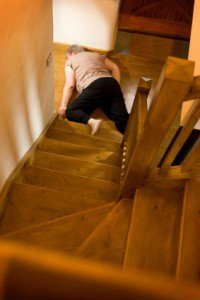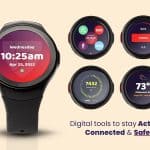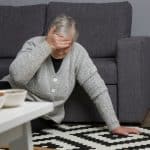According to the Centers for Disease Control and Prevention (CDC), falls are the leading cause of deaths relating to injuries. In fact, more than one third of adults aged 65 and older fall every year in the U.S.
How Dangerous Is The Problem?
The CDC states:
- Deaths due to falls have increased 30% from 2007 to 2016 for people aged 65 and older. If the rate continues to rise, there will be 7 falls deaths an hour in the elderly population by 2030. So, the fall itself may not have caused the death, but the injury sustained from the fall could have.
- Currently, approximately 3 million people 65 and older were treated in emergency rooms for injuries from falls.
- More than 800,000 of the falls that were treated in the ER resulted in hospitalization.
What Are The Long-Term Effects Of Falls?
According to information obtained from the CDC:
- Falls are the most common cause of traumatic brain injuries among older adults.
- Up to 30% of people who fall suffer moderate to severe injuries. These injuries include: bruises, hip fractures, and head traumas. These injuries can limit independent living and increase the risk of early death.
- The majority of bone fractures that are caused by falls include: spine, hip, forearm, leg, ankle, pelvis, upper arm, and hand.
- Many people who fall and develop a fear of falling, reduce their mobility and increase their chances of future falls, due to less physical activities in their daily living.
What Increases The Likeliness of Falling?
- People who have chronic conditions such as vision problems or vitamin D deficiency.
- Those who use medications that can cause dizziness or unbalance.
- Hazards in the home such as rugs without non-skid mats, broken stairs and excessive clutter.
How Can You Prevent Falls?
- Ask your medical care provider if any combination of your medications is potentially dangerous for sleepiness and to check if you are vitamin D deficient.
- Have your home care provider or loved one check your home for potential fall hazards. Removing these hazards are key to preventing falls.
- Stay up-to-date with your eye exams.
- Keep up with health care recommendations and daily balance exercises such as yoga.
How Can Medical Alert Monitoring Systems Help?
- Medical alert monitoring systems can provide immediate access to life saving ambulance services which can limit injuries by providing early treatment.
- Providers of medical alert services give comfort to loved ones while waiting for the first responders to arrive.
- Many medical alert systems can provide activity monitoring services that provide further security and added safety.
- For seniors or others who are more prone to falling, some companies provide fall detectors to provide more specialized protection. These automatic fall detectors are becoming more common. Find the right medical alert device for your loved one by reading our Life Alert reviews.
Who’s More Prone To Fall, Your Mother or Your Father?
You may find it interesting that men are nearly 50% more at risk of dying from a fall than women. Also, 67% of woman versus men, are more likely to suffer non-fatal injuries as a result of falls. Since men are traditionally stronger than women, strength certainly does not help them here. Could it simply be that physical mass causes increased deaths in men over women?
Clearly, falling is a real issue that can’t be ignored by seniors and caregivers. A fall can happen anytime and anywhere. Although a medical alert monitoring system can’t prevent a fall, it may be able to limit the degree of injury and more importantly, save you or your loved one’s life with a simple push of a button.



